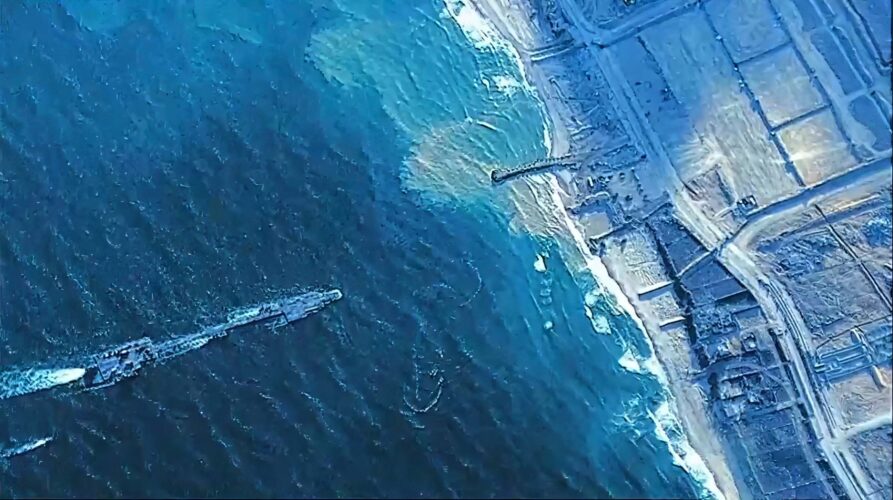The United States Military’s floating pier off the coast of Gaza was shut down indefinitely on Tuesday after the structure sustained heavy damage from rough seas, ending the American aid operation less than two weeks after it began. The pier, which cost US taxpayers roughly $320 million, was intended to serve as the Biden administration’s humanitarian corridor into Gaza during Israel’s campaign against Hamas—but even before the damage, none of the supply shipments transported across it reached their intended destinations.
According to Pentagon Deputy Press Secretary Sabrina Singh, the pier was “damaged and sections of the pier need rebuilding and repairing” after inclement weather and choppy seas caused entire sections of the structure to break off. As Valuetainment previously reported, parts of the pier washed ashore near the Israeli port city of Ashdod to the north. Two US naval support vessels were also beached during the recovery process.
An American vessel used to unload humanitarian aid from ships into the Gaza Strip via a floating pier disconnected from a small boat tugging it this morning due to stormy seas, leading it to get stuck on the coast of Ashdod, eyewitnesses say.
Another ship was then sent to try… pic.twitter.com/08XtPr0K8K
— Emanuel (Mannie) Fabian (@manniefabian) May 25, 2024
Learn the benefits of becoming a Valuetainment Member and subscribe today!
Singh indicated that the remaining portions of the pier will be towed to the port of Ashdod for repairs. No official timeline for the process was given, but the Pentagon anticipates that it will take at least a week. Despite the setback, Singh maintained that the idea behind the floating construction is solid.
“From when it was operational, it was working, and we just had sort of an unfortunate confluence of weather storms that made it inoperable for a bit,” Singh said. “Hopefully just a little over a week, we should be back up and running.”
The pier project was first announced by President Joe Biden during his State of the Union Address in March, with the goal of providing aid to Gaza’s population. However, since that announcement, the operation has been mired in controversy, financial setbacks, and logistical challenges.
Per CNN, the pier can only safely facilitate the transporting of supplies if waves are under three feet and winds are less than 15 miles per hour. These incredibly specific conditions meant that, of the 12 days since the operation began, several days were spent waiting for more favorable weather.
Further complicating matters is the fact that, as of last week, none of the 569 tons of aid supplies transported across the then-intact pier have been delivered to the Palestinian people. According to Pentagon spokesman Maj. Gen. Pat Ryder:
The U.S. military is delivering [the aid] to the causeway. It’s then taken by non-U.S. contractors, driven over onto shore, put into an assembly area, which is where the NGOs that are supporting this effort pick it up and take it for onward distribution. But as I mentioned, you know, via some discussions that have happened, again, as we work out processes and procedures, alternative routes for the safe movement of that cargo have been established, and aid is now being taken from those assembly areas to warehouses for further distribution throughout Gaza.
As reported by Reuters, 11 of the 16 trucks bound for the distribution warehouse were overrun by local residents who “basically mounted on the trucks and helped themselves to some of the food parcels.”
Connor Walcott is a staff writer for Valuetainment.com. Follow Connor on X and look for him on VT’s “The Unusual Suspects.”
Got a hot scoop or an idea for a story? Connect with the VT writers on Minnect!



















Add comment